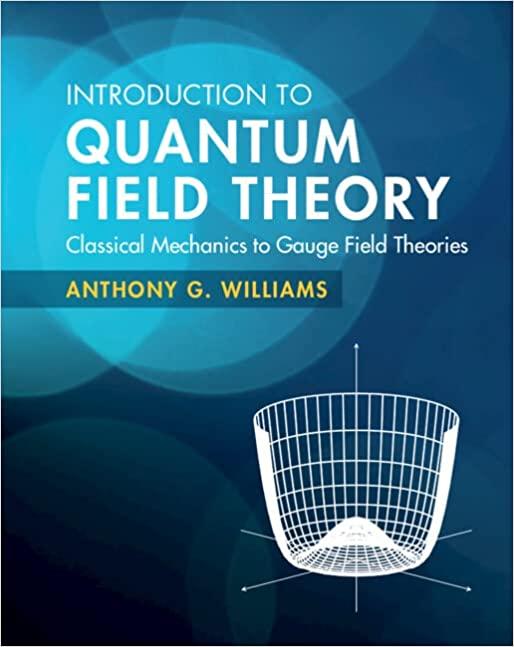Consider a theory with three interacting scalar fields (Phi, phi_{a}) and (phi_{b}) with masses (M, m) and
Question:
Consider a theory with three interacting scalar fields \(\Phi, \phi_{a}\) and \(\phi_{b}\) with masses \(M, m\) and \(m\), respectively, with \(3 m>M>2 m\) and with the Lagrangian density \[\begin{align*}\mathcal{L}= & \frac{1}{2} \partial_{\mu} \Phi \partial^{\mu} \Phi-\frac{1}{2} M^{2} \Phi^{2}+\frac{1}{2} \partial_{\mu} \phi_{a} \partial^{\mu} \phi_{a}-\frac{1}{2} m^{2} \phi_{a}^{2}+\frac{1}{2} \partial_{\mu} \phi_{b} \partial^{\mu} \phi_{b}-\frac{1}{2} m^{2} \phi_{b}^{2} \\& -(\lambda / 4 !) \Phi^{4}+\frac{1}{2} g_{a a} \Phi \phi_{a}^{2}+g_{a b} \Phi \phi_{a} \phi_{b} . \tag{7.6.114}\end{align*}\]
(a) What decays of the heavy scalar \(\Phi\) are possible in a tree-level calculation? Sketch the lowest order Feynman diagram for the process \(\Phi \rightarrow \phi_{b} \phi_{b}\).
(b) Can \(\phi_{a}\) or \(\phi_{b}\) decay? Explain.
(c) Evaluate the ratio of partial decay rates \(\Gamma\left(\Phi \rightarrow \phi_{a} \phi_{b}\right) / \Gamma\left(\Phi \rightarrow \phi_{a} \phi_{a}\right)\) at tree level.
(d) Evaluate the total tree-level decay rate for a \(\Phi\) at rest, \(\Gamma(\Phi \rightarrow\) anything \()\).
Step by Step Answer:

Introduction To Quantum Field Theory Classical Mechanics To Gauge Field Theories
ISBN: 9781108470902
1st Edition
Authors: Anthony G. Williams





